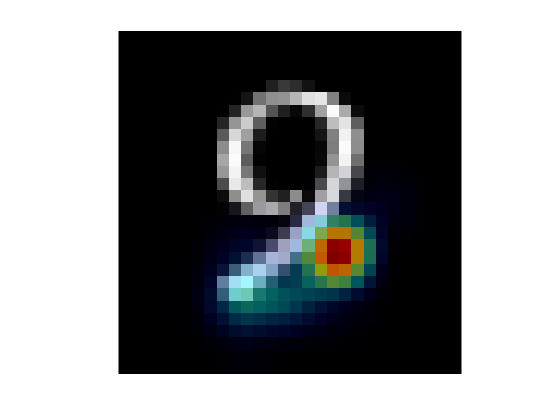anomalyMap
Syntax
Description
map = anomalyMap(detector,I)I.
Note
This functionality requires Deep Learning Toolbox™ and the Automated Visual Inspection Library for Computer Vision Toolbox™. You can install the Automated Visual Inspection Library for Computer Vision Toolbox from Add-On Explorer. For more information about installing add-ons, see Get and Manage Add-Ons.
map = anomalyMap(detector,I,ExecutionEnvironment=executionEnvironment)
